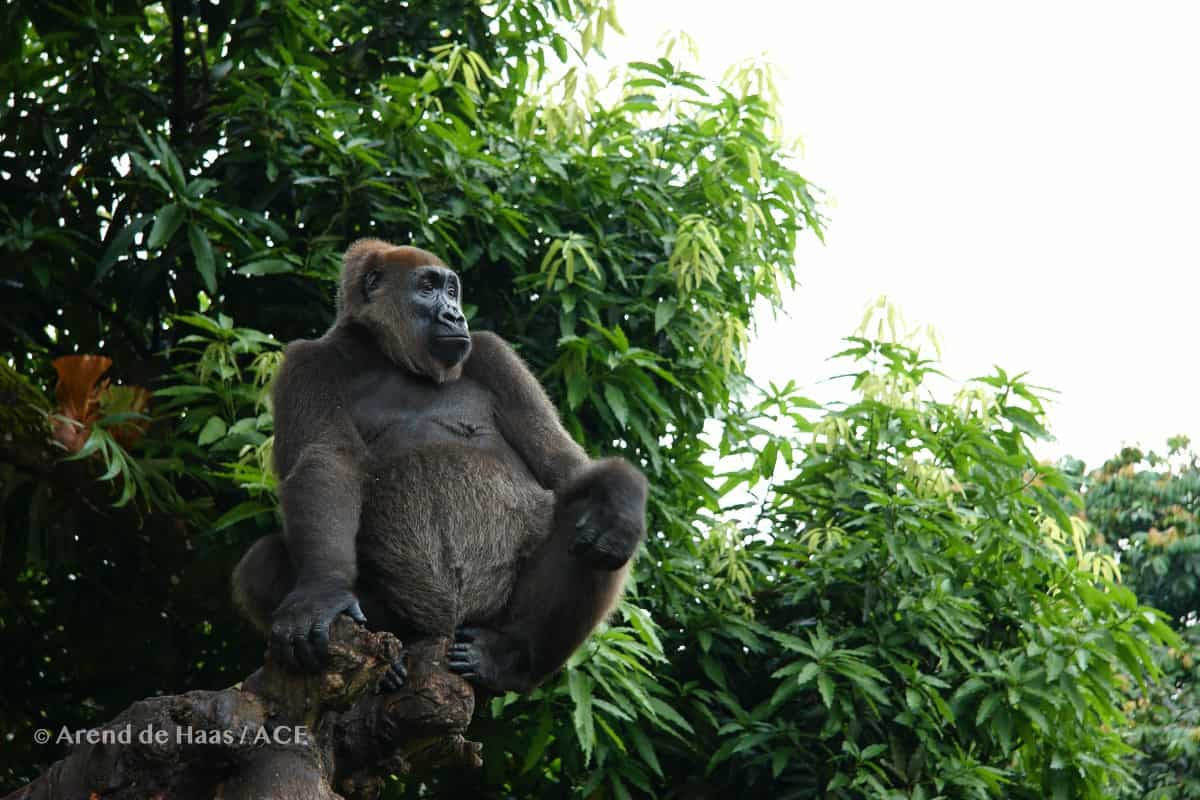Nigeria: Cooperation, education and enforcement key to Cross River gorilla survival
Efforts to save the Cross River gorilla, Africa’s most endangered ape, received renewed hope after the United Nations (UN) recently approved $4 million to help Nigeria further promote conservation and sustainable forest management.
Environmentalists welcomed the news, which will help fund the country’s National Programme for Reducing Emissions from Deforestation and Forest Degradation (REDD+) program, but warned that cooperation and education between all stakeholders, particularly local players, is key to preserving the species.
“Gorillas and chimps are protected by national and international law, but the reality is that that doesn’t actually happen … you have to have local buy-in,” said CIFOR Associate Jacqueline Sunderland-Groves, co-author of Remote Sensing Analysis Reveals Habitat, Dispersal Corridors and Expanded Distribution for the Critically Endangered Cross River gorilla Gorilla gorilla diehli.
Cross River gorillas live exclusively along the remote and mountainous Nigeria-Cameroon border, but their numbers are so few that they were once thought to be extinct in Nigeria. Illegal poaching for bushmeat and loss of habitat has left only around 300 individuals in the world, making forest conservation vital to their survival. Primates are particularly vulnerable to deforestation and hunting, given their large body size and slow reproductive rate.
“It’s getting more worrying now in terms of habitat fragmentation,” said Sunderland-Groves, explaining that activities, such as road building and expansion of other human development activities, were dividing land inhabited by the gorillas and isolating sub-populations. This, in turn, could lead to inbreeding and a loss of genetic variation. In addition, villages encroaching on gorilla habitat could increase any potential contact with people.
“Even if you hunt one gorilla, then you’ve made an impact on the population, because you’ve only got very few animals left … and every time one goes that’s part of your genetic pool gone.”
Despite the human intrusions, the report suggests that the Cross River region could support a much larger gorilla population. Sunderland-
Groves argues that Uganda’s Bwindi Impenetrable National Park sustains a similar number of mountain gorillas in a “considerably” smaller range.
“Even if only 50 percent of the existing forest represents usable gorilla habitat, it is possible that the Cross River area could support a much larger population,” she said.
Sunderland-Groves, however, warned that this was only a theory, and that any potential population rebound would be heavily dependent on stemming hunting and habitat loss.
Efforts to protect Cross River gorillas have been underway for fifteen years and hampered by a lack of knowledge regarding their movements, distribution and extent of habitat fragmentation. In addition, until recently, many lived outside of protected forests, where they were vulnerable to poaching.
Sunderland-Groves added that a lack of public awareness hinders survival. As such, she advocated pushing education among local communities, citing previous experience in Cameroon where local chiefs banned the killing of Cross River gorillas after being alerted to their conservation status.
“Having a traditional law in place really did stop it [hunting]. Local people take local laws more seriously,” she said, adding, “[we need] to get the younger generations thinking about gorillas and apes and wild animals, which are normally seen as a source of food and not really something to be cherished.”
While the UN-REDD grant aims to help national governments implement REDD+ strategies as a means of combating climate change, it also stresses active involvement of local stakeholders, including indigenous peoples and other forest-dependent communities. It is hoped that conserving Nigeria’s tropical forests will also help safeguard the future of the Cross River gorilla population.
Nigeria has one of the highest rates of forest loss in the world. The Cross River State contains 66 percent of the country’s remaining forest, and is home to hundreds of plant and animal species.
http://blog.cifor.org






